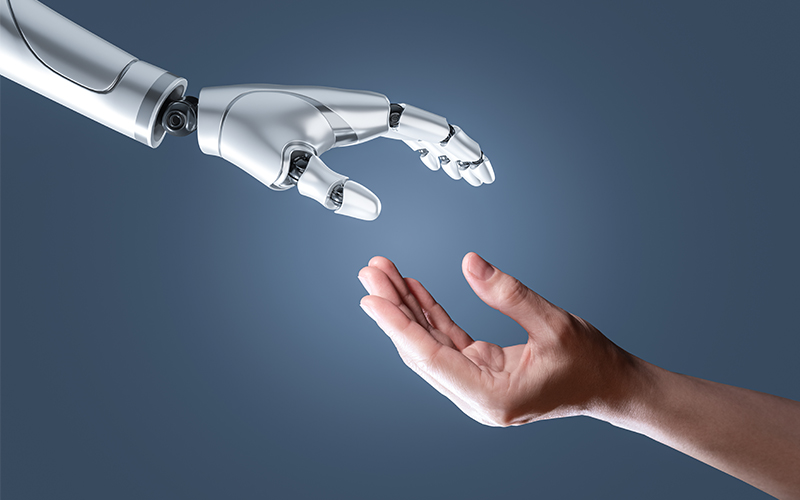AI-Driven Innovations: What’s Next for Technology?
AI-Driven Innovations: What’s Next for Technology? The horizon of technological progress gleams with promise. From generative models composing symphonies to intelligent nanosensors monitoring our health, AI-driven innovation is propelling us into a new era of possibility. This deep-dive explores the frontiers of research and development poised to reshape industries, elevate human potential, and confront global challenges. Interspersed with concise insights and expansive analysis, this guide illuminates the trajectory of AI-fueled breakthroughs and the novel paradigms they engender.

H2 1. The Quantum Leap: AI Meets Quantum Computing
Short sentence. Power multiplies.
Quantum computing and artificial intelligence are converging in spectacular fashion. Quantum processors exploit superposition and entanglement to perform certain computations exponentially faster than classical systems. When woven into machine learning pipelines, they give rise to AI-driven innovation such as:
- Quantum Kernel Methods, mapping data into ultra-high-dimensional spaces for more nuanced classification.
- Variational Quantum Circuits, where hybrid quantum-classical loops optimize neural network parameters with unprecedented efficiency.
- Quantum Reinforcement Learning, enabling agents to explore vast strategy spaces far beyond classical feasibility.
Though still nascent, quantum accelerators are already transforming molecular simulations, cryptographic analysis, and complex scheduling challenges.
H2 2. Generative AI: From Text to Thirty-Six Degrees of Creativity
Generative AI has leapt beyond chatbots. Multimodal architectures now harmonize language, vision, audio, and even tactile feedback. In 2025, expect:
- Text-to-Video Models that craft fully animated sequences from simple prompts.
- Audio-Visual Synthesis producing immersive VR experiences complete with spatial soundscapes.
- 3D Asset Creation that auto-generates photorealistic environments for gaming and architecture.
- Haptic Generators piloting next-gen wearables with nuanced touch feedback.
These systems rest on unified transformer backbones, aligning embeddings across modalities to foster seamless AI-driven innovation in entertainment, education, and design.
H2 3. TinyML: Intelligence at the Edge
Compute at the core. No cloud needed.
TinyML brings machine learning to microcontrollers and edge devices. By 2025, models under 100 KB can detect anomalies in industrial machinery, recognize Parkinson’s tremors on wearables, or monitor air quality via distributed sensors. Key advances include:
- Model Pruning & Quantization, squeezing neural nets into pocket-sized form factors.
- On-Device Personalization, adapting speech recognition or health monitoring without data leaving the device.
- Federated Learning Networks, where countless devices collectively refine shared models while safeguarding privacy.
Edge intelligence reduces latency, bolsters security, and curtails energy consumption—transforming everything from smart homes to precision agriculture.
H2 4. Neuro-Symbolic Synergy: Marrying Logic with Learning
Best of both worlds.
Symbolic AI excels at logic and reasoning; neural networks dominate pattern recognition. Neuro-symbolic systems blend these paradigms:
- Differentiable Logic Layers allow strict rules to guide end-to-end learning.
- Knowledge Graph Embeddings infuse domain expertise directly into neural architectures.
- Program Synthesis, generating code-like blueprints from learned abstractions.
This synergy fuels robust generalization, enables zero-shot inference, and paves the way for trustworthy AI-driven innovation in legal reasoning, scientific discovery, and automated theorem proving.
H2 5. Explainable AI: Demystifying the Black Box
Transparency matters.
As AI infiltrates critical domains—healthcare diagnoses, credit underwriting, legal analysis—understanding its decisions becomes paramount. Advances in explainable AI (XAI) for 2025 include:
- Counterfactual Frameworks, illustrating how slight input shifts alter outcomes.
- Causal Attribution Models, distinguishing genuine cause-effect from spurious correlation.
- Formal Verification Techniques, mathematically proving model behavior under specified constraints.
Empowering stakeholders with clear rationales cultivates trust, mitigates bias, and embeds fairness into every layer of AI-driven innovation.
H2 6. AI for Climate Resilience
Data-powered stewardship.
The climate crisis demands unprecedented computational might. AI’s role evolves from analysis to actionable insight:
- High-Resolution Climate Simulation, using deep learning to refine partial-differential-equation solvers.
- Remote-Sensing Analytics, spotting deforestation, ice-melt, and ocean acidification in near-real time.
- Renewable Grid Optimization, where reinforcement learning balances wind, solar, and storage supply.
- Carbon Capture Design, leveraging generative chemistry to discover novel sorbent materials.
AI-driven tools guide policy, mobilize resources, and chart pathways toward net-zero futures.
H2 7. Autonomous Agents in Unstructured Environments
AI goes dynamic.
Beyond controlled warehouses and simulated arenas, agents tackle the real world’s messiness:
- Swarm Robotics, coordinating fleets of drones or ground bots for search-and-rescue or precision agriculture.
- Multi-Agent Economic Models, simulating market dynamics in virtual economies.
- Autonomous Research Platforms, where lab robots design, execute, and analyze experiments end-to-end.
These agents learn collaboratively, adapting policies to dynamic contexts with minimal human oversight—heralding a new chapter in AI-driven innovation.
H2 8. AI-First Enterprises: The Organizational Revolution
Data-centric transformation.
In 2025, leading companies embed AI into every process:
- Data Mesh Architectures unify siloed datasets for frictionless model access.
- Decision Intelligence Platforms integrate predictive insights directly into daily workflows.
- Continuous Deployment of AI, via robust MLOps pipelines that ensure governance, traceability, and rapid iteration.
AI-first enterprises outpace peers by combining speed, scalability, and strategic foresight.
H2 9. Cognitive Augmentation and Brain–Computer Interfaces
Merging mind and machine.
Neurotechnology advancements hint at profound symbiosis:
- Non-Invasive BCIs decode neural signals to control prosthetics or smart environments.
- AI-Enhanced Neurofeedback, accelerating learning and treating mental health conditions.
- Memory Prostheses, exploring artificial hippocampal implants to bolster recall.
While ethical and technical hurdles remain, these frontiers embody the bold promise of AI-driven innovation.
H2 10. Synthetic Data and Privacy-Preserving Generators
Filling the gaps.
Access to quality data often bottlenecks AI projects. Synthetic data generators craft realistic datasets for training without exposing sensitive information. Techniques include:
- GAN-Based Synthesis, creating lifelike images, text, or sensor streams.
- Differential Privacy, embedding statistical noise to protect individual records.
- Secure Multi-Party Computation, enabling collaborative model training without exposing raw data.
These methods fuel creative breakthroughs while upholding privacy.
H2 11. AI in Healthcare: From Diagnosis to Holistic Well-Being
Beyond pills and probes.
Healthcare’s transformation accelerates:
- Radiology Assistants that detect anomalies at superhuman accuracy.
- Digital Twins of Patients, simulating treatment responses before interventions.
- Conversational Mental Health Agents, offering personalized cognitive behavioral therapy.
- Precision Nutrition Plans, crafted by models analyzing genomics, microbiomes, and lifestyle data.
The result: medicine shifts from reactive care to proactive wellness—a hallmark of AI-driven innovation.
H2 12. Ethical Governance and Regulatory Sandboxes
Frameworks with teeth.
To harness AI responsibly, 2025 brings robust governance:
- International AI Accords, aligning safety and human-rights standards.
- Regulatory Sandboxes, letting innovators test high-risk applications under supervision.
- Algorithmic Impact Assessments, akin to environmental reviews, evaluating social and economic ramifications.
These guardrails ensure AI’s power uplifts humanity without unleashing unchecked consequences.
H2 13. AI-Enhanced Creativity and Artistic Collaboration
Canvas meets code.
Artists and technologists join forces:
- Co-Creative Music Platforms, where AI suggests harmonies and rhythms in real-time.
- Adaptive Screenplays, interactive narratives that evolve based on audience sentiment.
- Generative Fashion Design, crafting bespoke patterns and fabrics via diffusion models.
- Dynamic Architecture Simulations, where structures morph to optimize light, airflow, and aesthetics.
This nexus of art and algorithm embodies the expressive essence of AI-driven innovation.
H2 14. The Metaverse and AI-Infused Virtual Worlds
Digital realms reborn.
The metaverse emerges as a parallel reality, powered by intelligent agents:
- NPCs with Personality, driven by large language models and emotion simulators.
- Virtual Economies overseen by AI economists balancing supply, demand, and inflation.
- Spatial AI, mapping and interpreting 3D environments for seamless navigation and interaction.
Together, they blend physical and digital experiences into unified, persistent worlds.
H2 15. The Road Ahead: Democratizing AI Innovation
Opening the gates.
As barriers to entry fall, AI innovation spreads:
- Low-Code AI Platforms, enabling domain experts to craft custom models without deep expertise.
- Open-Source Model Hubs, where foundational architectures and datasets are freely shared.
- Community-Driven Research, harnessing global talent through collaborative challenges and prize competitions.
This democratization ensures that the next wave of AI-driven innovation springs from diverse minds tackling urgent needs.
H2 Conclusion: Charting the Course for Tomorrow
The tapestry of AI-driven advancements unfurls across quantum, creative, ethical, and environmental domains. As these technologies interlace, they form a powerful ecosystem—one in which intelligence augments empathy, efficiency, and equity. Embracing these trends with curiosity and care will empower industries, enrich lives, and steer us toward a future where technology truly reflects our highest aspirations.







